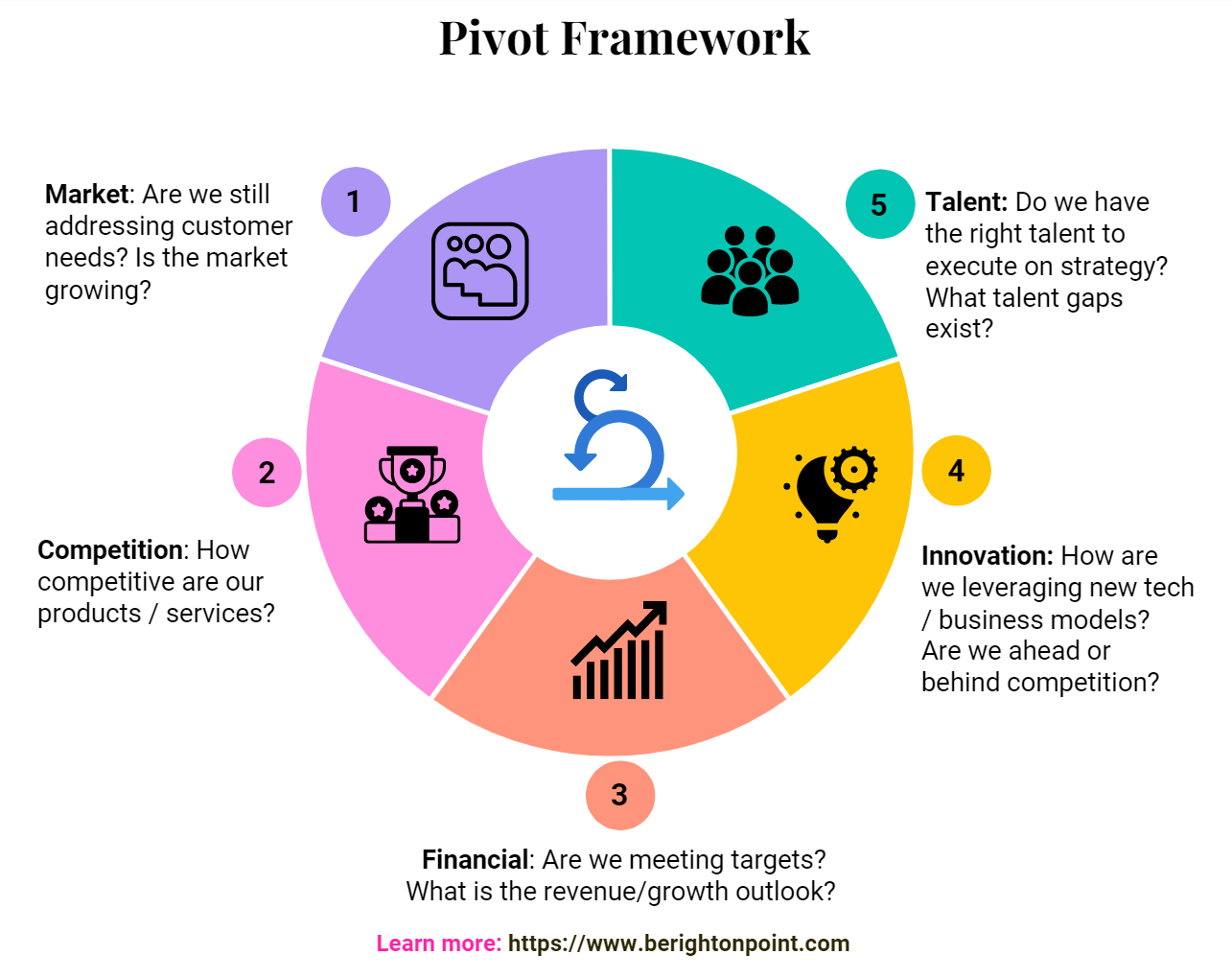The Power of Pivoting in the Age of Generative AI
While the adage "Winners never quit, and quitters never win" is well-known, this mindset may limit options for achieving optimal outcomes in the fast-paced world of generative AI. Instead, I suggest
Winners know when to pivot and explore better options.
As generative AI becomes ubiquitous and continues to evolve quickly, speculation is rampant on how the technology will transform our lives. Microsoft’s addition of generative AI alone in widely-used products like Word, Powerpoint, and Excel extends its access to millions globally. Business leaders who move quickly and develop effective strategies in an evolving landscape of generative AI are likely to emerge as winners.
The pivot approach enables leaders to discover new growth opportunities faster, resulting in better outcomes. This article explores the advantages of pivoting, why the decision to shift gears can be difficult, and provides a framework for determining when a pivot is necessary. Have these concepts handy for your next business review, strategy offsite, or investment discussion.
Pivoting is a strategic investment tool. During my time leading innovation at PricewaterhouseCoopers (PwC), one of our portfolio investments showed great potential, with elements of first-mover advantage. We decided to increase our level of investment and expand into additional international markets.
The initial product market fit tests were positive. However, we later observed a slower rate of traction in certain geographies.
We recognized a need to re-examine our business model in slow growth areas. This led us to change our activities, slow the pace of incremental investment in existing markets, and pause expansion into new areas. Our pivot enabled us to maintain a strong position in promising markets, learn what did / didn’t work, and avoid over-investment in areas with less potential.
Pivoting increases the likelihood of success. Harvard Business Review surveyed more than 4,700 companies and found that businesses that made bold, strategic moves, including pivoting product offerings, had a significantly higher likelihood of outperforming competitors.
Notable examples of pivots include Instagram. The company shifted from a location-based social network to a photo-sharing service, ultimately being acquired by Facebook for $1 billion. Similarly, Netflix pivoted from providing online DVD rental in the US to streaming services globally.
One of the biggest challenges that business leaders face is knowing when to pivot. Nobel Laureate Professor Richard Thaler introduced the sunk cost fallacy to explain why such decisions can be difficult. The theory suggests that we are less willing to give up on something we have already invested time, money, and effort into - even if it means more risk and less reward.
To stay ahead of the curve, leaders should evaluate five factors: market landscape, competition, financial outlook, talent needs, and innovation investments. This will enable organizations to assess whether a pivot in strategy is necessary to achieve business objectives.
By asking critical questions across the five factor framework, leaders can gain valuable insights into the health of the business and assess what changes are required. The ability to pivot with speed can mean the difference between winning and merely surviving in the fast-evolving landscape of generative AI.
Looking for a partner to help you evaluate your strategy? Decided to pivot and need help developing a new operating strategy? Reach out here. We can help you navigate business challenges with strategic, actionable solutions that empower you to lead and achieve at the highest levels.
Read widely, learn deeply, be On Point.
Joselle
Pro Tips
Read: Making Innovation Work
Read: PricewaterhouseCoopers to Pour $1 Billion Into Generative AI
Musings on management, leadership, and strategy to help you stay On Point in today's fast paced, tech-forward, global business world.
Loved what you read?
Want others to be On Point? Share this link





